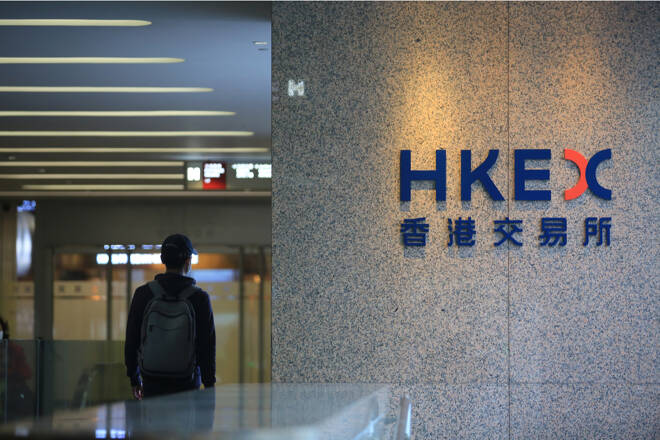Advertisement
Advertisement
Hang Seng Index, Nikkei Index, ASX 200: China Trade Data in Focus
By:
Key Points:
- It was a negative Thursday session for Asian equity markets as investors reacted to the US CPI Report.
- On Friday, US producer prices and tech stock gains from Thursday will influence market risk sentiment.
- Trade data from China will also garner investor attention after the weaker-than-expected inflation numbers from China.
US Equity Markets: US Producer Prices and the Fed
Inflation figures from Thursday and the market reaction will set the tone for the Friday session.
US producer prices increased 2.1% year-on-year in March after advancing 1.6% in February. Economists forecast producer prices to rise by 2.2%. Core producer prices increased 2.4% year-on-year after advancing 2.1% in February. Economists expected core producer prices to rise 2.3%.
Nevertheless, investors brushed aside diminishing expectations of a June Federal Reserve rate cut, with tech stocks making gains.
10-year US Treasury yields responded to the producer price report, rising by 1.03% to end the session at 4.591%. On Thursday, the Dow slipped by 0.01%. The Nasdaq Composite Index and the S&P 500 ended the session up 1.68% and 0.74%, respectively.
Asian Economic Calendar: China Trade in Focus
On Friday, trade data from China warrant investor attention. Weaker trade terms could test optimism toward the economic outlook.
Economists forecast exports to decline 3.0% year-on-year in March after rising 7.1% in February. Moreover, economists expect imports to increase by 1.2% year-on-year after advancing by 3.5% in February.
Consumer and producer price trends for March suggested a weakening demand environment. Disappointing trade terms could impact investor appetite for riskier assets. Nevertheless, weaker-than-expected trade terms could fuel bets on a meaningful stimulus package from Beijing.
Other stats include finalized industrial production numbers from Japan. However, barring a marked revision to the preliminary figures, the report should have a limited impact on the Nikkei 225.
Commodities: Crude Oil, Gold, and Iron Ore
Investors will need to consider commodity prices. Commodity price movements could affect buyer demand for ASX 200-listed stocks and market risk sentiment.
On Thursday, Crude oil prices were lower despite tensions in the Middle East. Gold ended the Thursday session higher. Iron ore prices were also higher on Thursday.
The USD/JPY, the Intervention Zone, and the Nikkei
The USD/JPY sat well within the intervention zone at 153.230 on Friday. Japanese government interventions could bolster the Yen and impact buyer appetite for Nikkei-listed export stocks.
The Futures Markets
On Thursday, the ASX 200 was down 29 points, while the Nikkei was up 290 points, respectively.
ASX 200
The ASX 200 declined by 0.44% on Thursday. Bank and tech stocks contributed to the losses. The S&P ASX All Technology Index (XTX) fell by 0.24%. However, gold (XAU/USD), oil, and mining stocks cushioned the downside.
ANZ Group Holdings Ltd. (ANZ) and Commonwealth Bank of Australia (CBA) slid by 1.43% and 1.18%, respectively. National Australia Bank Ltd. (NAB) and Westpac Banking Corp. (WBC) saw losses of 0.95% and 1.10%, respectively.
Rio Tinto Ltd. (RIO) and BHP Group Ltd (BHP) advanced by 0.38% and 1.06%, respectively. Fortescue Metals Group Ltd. (FMG) gained 0.16%.
Woodside Energy Group Ltd (WDS) and Santos Ltd (STO) rallied 2.07% and 1.29%, respectively.
Gold stocks Northern Star Resources Ltd. (NST) and Evolution Mining Ltd (EVN) rose by 2.40% and 1.02%, respectively.
Hang Seng Index
On Thursday, the Hang Seng Index declined by 0.26%. Tech stocks and property stocks contributed to the losses. The Hang Seng Tech Index (HSTECH) and Hang Seng Mainland Properties Index (HSMPI) fell by 0.38% and 0.27%, respectively.
Tencent (0700) and Alibaba (9988) advanced by 0.25% and 0.34%, respectively.
However, bank stocks had a mixed session. HSBC (0005) gained 0.08%. China Construction Bank (0939) and Industrial Commercial Bank (1398) ended the day down 0.61% and 0.25%, respectively.
The Nikkei 225
(Graph for reference purposes only)
The Nikkei declined by 0.35% on Thursday. Threats of a Japanese government intervention pressured Nikkei-listed export stocks.
Bank stocks reversed their losses from the Wednesday session. Sumitomo Mitsui Financial Group Inc. (8316) and Mitsubishi UFJ Financial Group Inc. (8306) rallied 2.26% and 1.73%, respectively.
However, it was a negative session for the main components of the Nikkei.
KDDI Corp. (9433) and Softbank Group Corp. (9948) slid by 1.53% and 1.03%, respectively. Tokyo Electron Ltd. (8035) declined by 0.94%.
Fast Retailing Co. Ltd. (9983) saw losses of 0.59%, while Sony Group Corporation (6758) declined by 0.81%.
For upcoming economic events, refer to our economic calendar.
About the Author
Bob Masonauthor
With over 28 years of experience in the financial industry, Bob has worked with various global rating agencies and multinational banks. Currently he is covering currencies, commodities, alternative asset classes and global equities, focusing mostly on European and Asian markets.
Did you find this article useful?
Latest news and analysis
Advertisement
